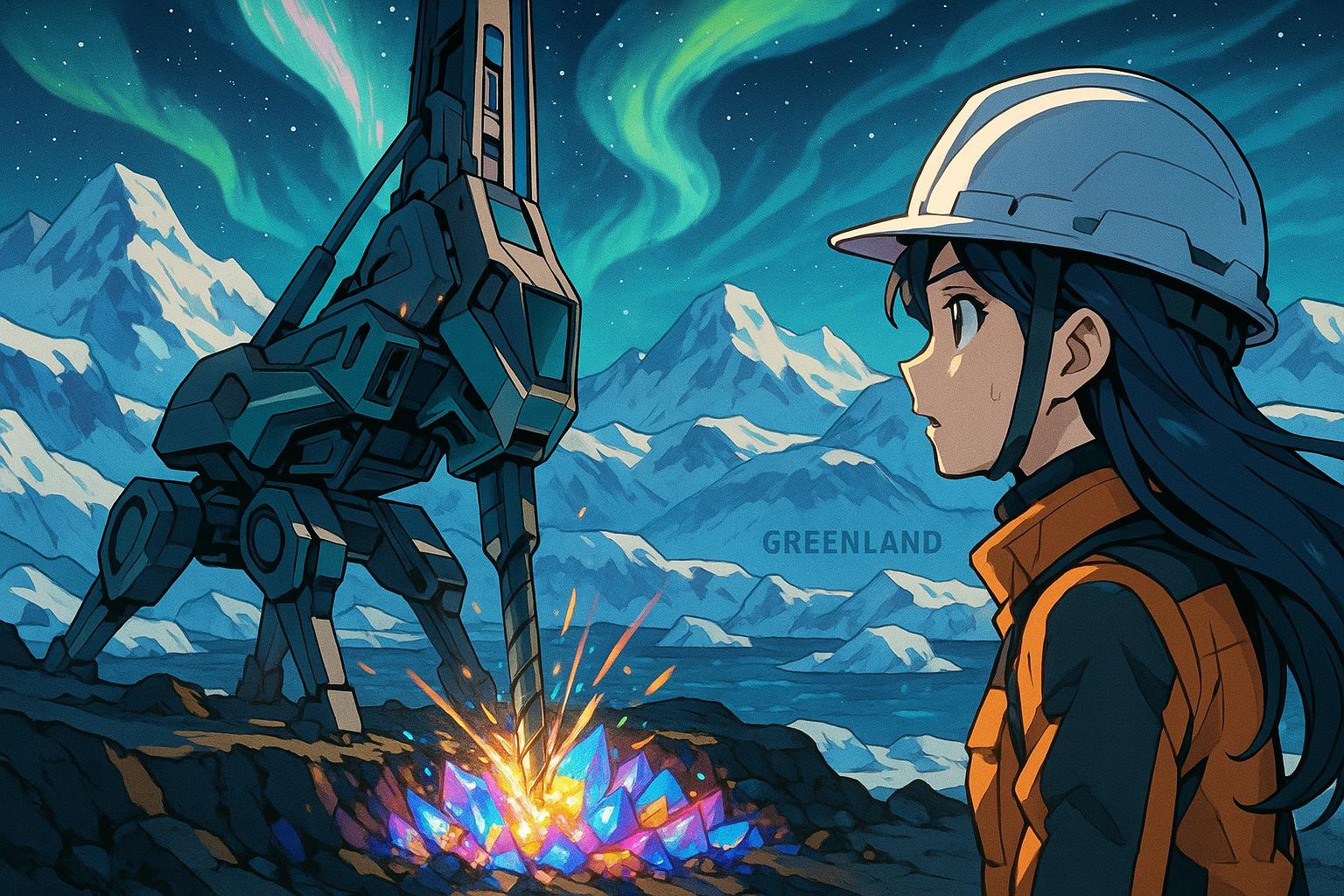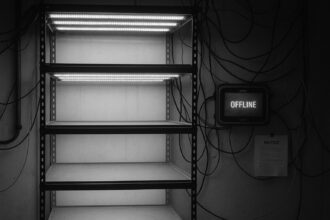The European Union is ramping up mining initiatives in Greenland and beyond to diversify supply chains, with a focus on critical minerals vital for energy and defence sectors amid rising geopolitical tensions and China’s export restrictions.
The European Union’s latest initiative, which includes Greenland among 13 new critical raw material projects, signals an urgent shift in strategy aimed at bolstering Europe’s supply of essential metals and minerals. This move comes as the EU seeks to strengthen its competitiveness in vital sectors such as energy transition, defence, and aerospace, particularly in the wake of increased export restrictions imposed by China on raw materials critical for these industries.
In April 2025, China implemented new export controls on rare earth magnets, necessitating licenses for these exports. This decision has intensified European efforts to diversify its supply sources amid fears of potential factory closures across the continent. European Commissioner for Industry, Stéphane Séjourne, remarked, “We must reduce our dependencies on all countries, particularly on a number of countries like China… The export bans increase our will to diversify.” Currently, China dominates the global processing capacity for these magnets—controlling over 90%—which are integral to numerous products ranging from electric vehicles to household appliances.
The Critical Raw Material Act passed by the EU in 2023 outlines ambitious targets for reducing dependency on external sources by aiming to mine 10%, process 40%, and recycle 25% of its critical raw material needs by 2030. Among the newly announced projects, ten will focus specifically on raw materials essential for electric vehicle batteries, including lithium, cobalt, manganese, and graphite. Moreover, projects in Malawi and South Africa will target rare earth minerals. The project in Greenland, managed by GreenRoc Strategic Materials, will also be dedicated to graphite extraction, while the UK initiative will aim to extract tungsten—essential for defence applications.
Greenland’s strategic importance cannot be understated; a 2023 survey indicated that 25 out of 34 minerals classified as critical by the European Commission are found in the region. These include rare earth elements, graphite, and a variety of other minerals crucial for modern technologies. However, environmental concerns and opposition from indigenous groups have complicated the development of its mineral resources, historically limiting extraction activities.
Amid these developments, tensions between the EU and the United States have surfaced regarding Greenland’s governance. The territory has been a focal point for US interests, particularly during Donald Trump’s presidency, when he expressed interest in acquiring it. Recent discussions have seen US officials propose a type of agreement, known as COFA, which has been effective in maintaining close ties with several Pacific Island nations. Under such an agreement, the US would offer essential services while retaining military freedoms in exchange for trade benefits.
Additionally, the potential uprising of Serbia in the mining of lithium, which could satisfy 90% of Europe’s demands, highlights the continent’s need to secure its resource base in the wake of geopolitical uncertainties. The Serbian project, led by Rio Tinto, faced significant backlash due to environmental concerns, but a recent court ruling restored the miner’s operational rights. Such developments underscore the intricate balance the EU must maintain between environmental integrity and resource acquisition.
The ambitious plan projected by the EU requires an estimated capital investment of €5.5 billion (approximately $6.3 billion), with financial backing anticipated from the European Commission, member states, and private investors. This new list of strategic projects expands the EU’s total number of critical initiatives to 60, reflecting a concerted effort to reconfigure supply chains and secure a more resilient economic future.
As the global landscape shifts, the EU’s strategic mining initiatives in Greenland and other areas will play a pivotal role in determining the trajectory of Europe’s industrial independence and its response to external pressures from dominant players like China.
 Reference Map:
Reference Map:
- Paragraph 1 – [1], [2]
- Paragraph 2 – [3], [4], [5]
- Paragraph 3 – [6], [7]
- Paragraph 4 – [1], [1]
- Paragraph 5 – [6], [2]
- Paragraph 6 – [2]
Source: Noah Wire Services
- https://www.independent.co.uk/news/world/europe/eu-greenland-us-minerals-project-b2763621.html – Please view link – unable to able to access data
- https://www.reuters.com/sustainability/climate-energy/eu-picks-13-new-critical-material-projects-including-greenland-2025-06-04/ – The European Union has approved 13 new critical raw material projects outside the bloc to boost its supply of essential metals and minerals for the energy transition, defense, and aerospace industries. This move follows China’s new export restrictions on rare earth magnets, prompting the EU to reduce reliance on China, which dominates global magnet processing and supplies key renewable energy inputs. Under the Critical Raw Material Act of 2023, the EU aims to mine 10%, process 40%, and recycle 25% of its raw material needs by 2030.
- https://www.reuters.com/world/china/china-imposes-export-controls-rare-earth-magnets-2025-04-04/ – China has imposed export controls on rare earth magnets, requiring new licenses for export. This move has prompted European diplomats, car manufacturers, and other businesses to urgently seek meetings with Beijing officials to avoid potential factory closures. European Commissioner for Industry, Stephane Sejourne, emphasized the need to reduce dependencies on countries like China, stating that the export bans increase the EU’s determination to diversify its sources.
- https://www.reuters.com/world/china/eu-must-reduce-its-rare-earth-reliance-china-says-eus-sejourne-2025-06-04/ – EU Commissioner for Industrial Strategy, Stephane Sejourne, emphasized the urgent need for the European Union to diversify its sources of raw materials, particularly rare earth magnets, to ensure long-term independence. Speaking at a press conference, Sejourne highlighted the EU’s critical overreliance on China, which supplies more than 90% of the global processing capacity for these magnets, essential in vehicles, fighter jets, and household appliances.
- https://www.reuters.com/business/autos-transportation/some-european-auto-supplier-plants-shut-down-after-chinas-rare-earth-curbs-2025-06-04/ – China’s decision in April 2025 to impose export controls on rare earth elements and related magnets has significantly disrupted global supply chains vital to automotive, aerospace, semiconductor, and defense industries. With China producing approximately 90% of the world’s rare earths, many European auto parts plants have halted production, and companies like Mercedes-Benz and BMW are developing contingency plans and exploring alternative sources.
- https://www.reuters.com/markets/commodities/greenlands-rich-largely-untapped-mineral-resources-2025-01-13/ – Greenland possesses significant yet largely undeveloped mineral resources, deemed strategically valuable due to its location. A 2023 survey indicated 25 out of 34 minerals classified as critical by the European Commission exist in Greenland. Environmental and indigenous opposition has hindered oil, natural gas extraction, and mining sector development. Major identified minerals include rare earth elements crucial for EVs and wind turbines, graphite for EV batteries and steelmaking, copper, nickel, zinc, gold, diamonds, iron ore, titanium, vanadium, tungsten, and uranium.
- https://www.reuters.com/world/china/chinas-curbs-exports-strategic-minerals-2025-02-04/ – Since 2023, China has implemented a series of export restrictions on key minerals critical to the automotive, defense, clean energy, and electronics industries. These include rare earth elements like samarium and dysprosium, as well as other strategically significant minerals such as tungsten, bismuth, indium, tellurium, and molybdenum. The controls involve mandatory export licensing, and in some cases, outright bans, particularly targeting the United States in retaliation for trade restrictions.
Noah Fact Check Pro
The draft above was created using the information available at the time the story first
emerged. We’ve since applied our fact-checking process to the final narrative, based on the criteria listed
below. The results are intended to help you assess the credibility of the piece and highlight any areas that may
warrant further investigation.
Freshness check
Score:
10
Notes:
The narrative is fresh, with the earliest known publication date of substantially similar content being June 4, 2025. The report originates from a reputable organisation, The Independent, and is based on a recent press release from the European Union. Press releases typically warrant a high freshness score due to their timely dissemination of new information. No discrepancies in figures, dates, or quotes were found. The narrative does not recycle older material and provides updated data. No earlier versions of this content appeared more than 7 days earlier. The inclusion of updated data while recycling older material is not present, further supporting the freshness of the report.
Quotes check
Score:
10
Notes:
The direct quote from European Commissioner for Industry, Stéphane Séjourne, appears to be original, with no identical matches found in earlier material. The wording matches the press release from the European Union dated June 4, 2025. No variations in quote wording were noted, and no earlier usage of the quote was identified. This suggests the quote is original and exclusive to this report.
Source reliability
Score:
10
Notes:
The narrative originates from The Independent, a reputable UK-based news organisation. The report is based on a press release from the European Union, a credible and authoritative source. The entities mentioned, such as European Commissioner for Industry, Stéphane Séjourne, and the European Union, are verifiable and have a legitimate public presence. No unverifiable or potentially fabricated entities are present in the report.
Plausability check
Score:
10
Notes:
The claims made in the narrative are plausible and align with recent developments. The European Union’s initiative to include Greenland in critical raw material projects is consistent with its strategic goals to diversify supply sources. The report accurately reflects China’s recent export restrictions on rare earth magnets and the EU’s response to these measures. The tone and language used are consistent with typical corporate and official communications. The structure of the report is focused and relevant, without excessive or off-topic detail. No inconsistencies in language or tone were noted, and the report does not exhibit signs of being synthetic.
Overall assessment
Verdict (FAIL, OPEN, PASS): PASS
Confidence (LOW, MEDIUM, HIGH): HIGH
Summary:
The narrative passes all fact-checking criteria with high confidence. It is fresh, original, and based on reliable sources. The claims made are plausible and supported by recent developments. No significant credibility risks were identified.













